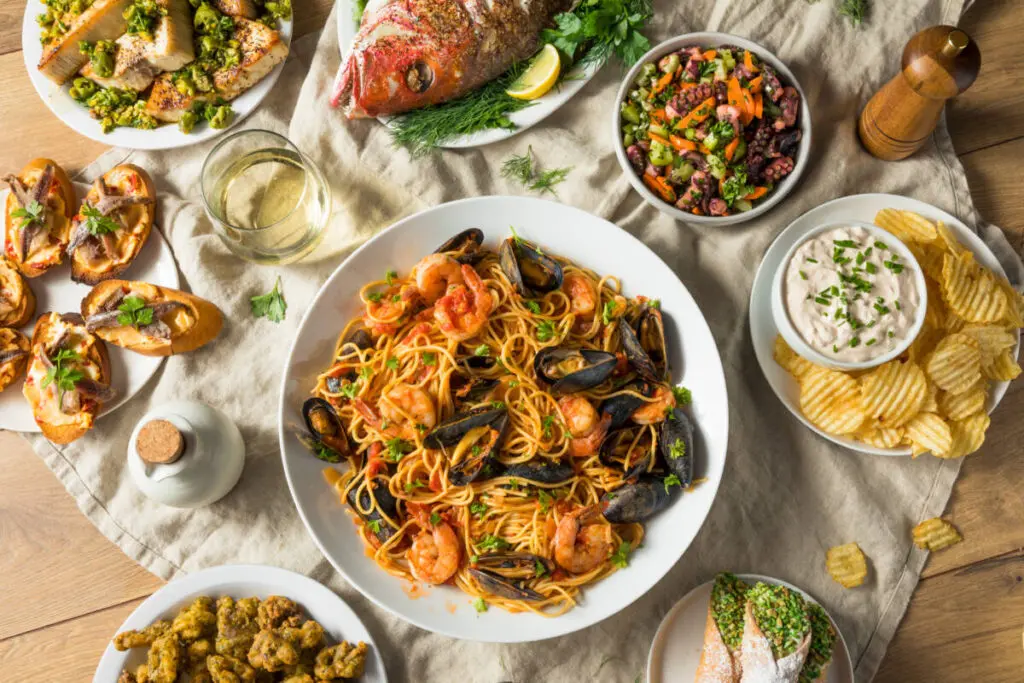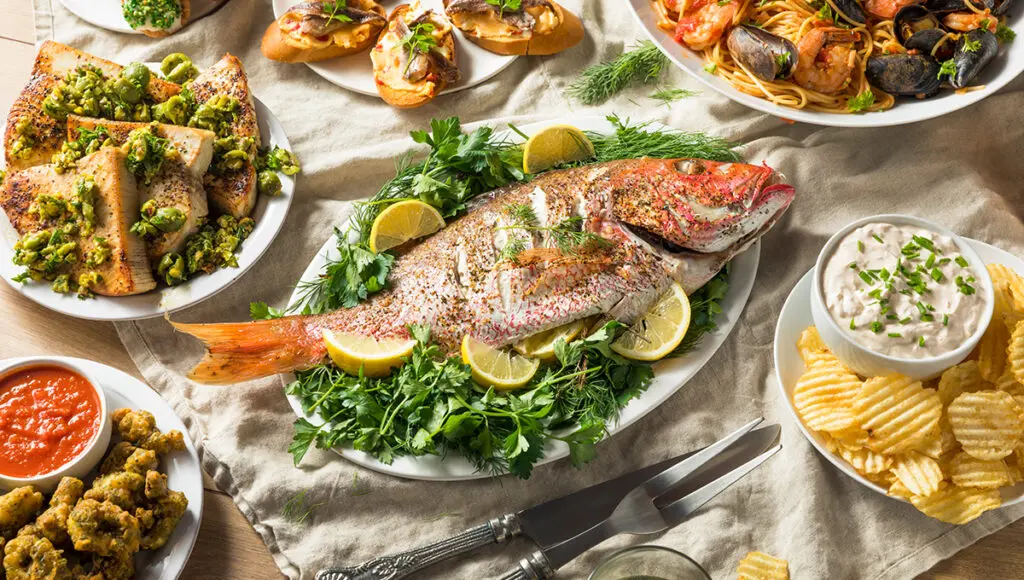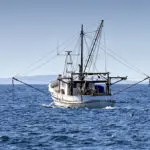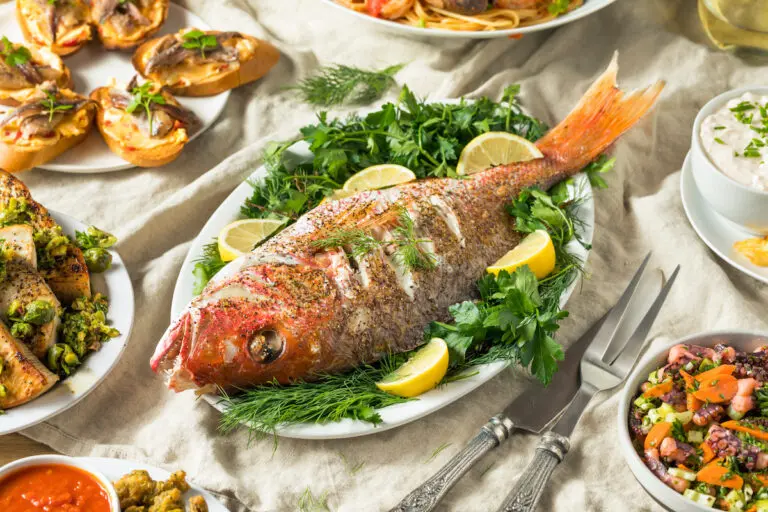Around the world, classic Christmas and holiday fare is not necessarily a ham or turkey (or Chinese food if you’re Jewish in America). Instead, it centers on seafood. On Christmas Eve, Roman Catholics traditionally fasted during the day. For the final evening meal of the Advent fast, meat was forbidden and fish was king and queen.
Don’t carp at carp!
In Poland, Hungary, eastern parts of Germany, and the Czech Republic, you might imagine that people would eat a rich goose or duck for a holiday meal.
But for generations, the centerpiece of the Christmas Eve dinner in these Roman Catholic cultures has been carp. The tradition is alive among Eastern Europeans living in England, where fishmongers, who buy fresh mirror carp from farms in France, see sales jump more than tenfold during the holiday season.
Long ago, you might fish for your own carp in the village pond. In later years, Eastern Europeans might buy a carp alive and keep it in a bucket or bathtub until Christmas Eve. Nowadays you might buy it fresh-killed or frozen. Carp, which is a bit sweeter than cod, is roasted whole, breaded and fried, cooked in a cream sauce or jellied.
A scary sweet
During Christmas in Portugal, don’t miss seeing lampreia de ovos, a sweet egg concoction in the shape of the lamprey, a spotted river fish with teeth. Traditionally made by nuns, the playful sweet includes candied cherries for eyes and almonds for teeth. It honors a fish that once served the population as a staple during Lent. The body is made from sweetened yolks and grated almonds, dressed in sheets of yolks and syrup. One can use a hot iron to make the signature spots.
For their savory centerpiece, the Portuguese love salt cod, or bacalhau (bacalao in Spanish and baccalà in Italian), soaked in water for a few days before cooking. The simple Christmas Eve dinner, called Bacalhau da Consoada, combines boiled cod with potatoes, hard-boiled eggs and cabbage or other greens, all drizzled with olive oil. Some families opt for Bacalalhau à Gomes de Sá, with olives, or Bacalhau com Natas, with cream, nutmeg and a béchamel topping or sometimes cheese.
Feast on fish
Southern Italians end their fast after midnight mass, in the early hours of Christmas morning. The bountiful feast of seafood and pasta might be called La Vigilia di Natale (Vigil of the Nativity), Cenone (Great Supper), Cena della Vigilia di Natale (Supper of the Vigil of the Nativity) or simply La Vigilia. Even for Christmas dinner, when Roman Catholics are permitted meat, you’re likely to see seafood as antipasti.

In the United States, Italian communities evolved the “Feast of the Seven Fishes.” The number seven may refer to the seven hills around Rome, the seven days in which God created the earth, or the seven sacraments.
Oysters, oh my!
When Irish immigrants fled famine to come stateside in the mid-1800s, they brought a tradition of eating a milky stew on Christmas Eve based on the ling fish, which tastes like cod. In the United States, they substituted oysters.
At that time, once you left the coast, oysters were available only in winter. Wrapped in seaweed and wet straw, they could last for about two weeks before spoiling. Inland, they became a sign of the arrival of the holiday season, appearing in the markets just in time for Christmas Eve.
American historian Joseph Conlin wrote about the oyster in American Heritage in 1980. “Even before the railroad, great lumbering express wagons hauled live oysters hundreds of miles inland. An ambitious former congressman named Abraham Lincoln seems to have been admired locally for his oyster orgies, and the Lincolns several times threw parties at which huge quantities of the mollusks were eaten raw and subjected to every method of cookery then practiced in Springfield, Illinois.”
Fortunately, unlike Abe Lincoln, you needn’t commission an express wagon to quick-haul oysters to your midwestern Christmas feast – they are easy to order, even in Illinois. In the American South, oysters from the Gulf of Mexico might appear in stew or stuffing at either or both Thanksgiving and Christmas. Another Christmas favorite was shrimp and grits, referred to as hominy.
Christmas in summer
In Australia, Christmas arrives when people are outdoors, enjoying the year’s best weather. The notable dessert is light and fluffy pavlova, a meringue layered with cream with fresh fruit on top.
According to the national youth hostel association, fresh oysters are close to the most iconic Aussie Christmas food. But the top spot goes to precooked shrimp you peel yourself.
The group writes: “In Australia, prawns literally taste like Christmas.”








